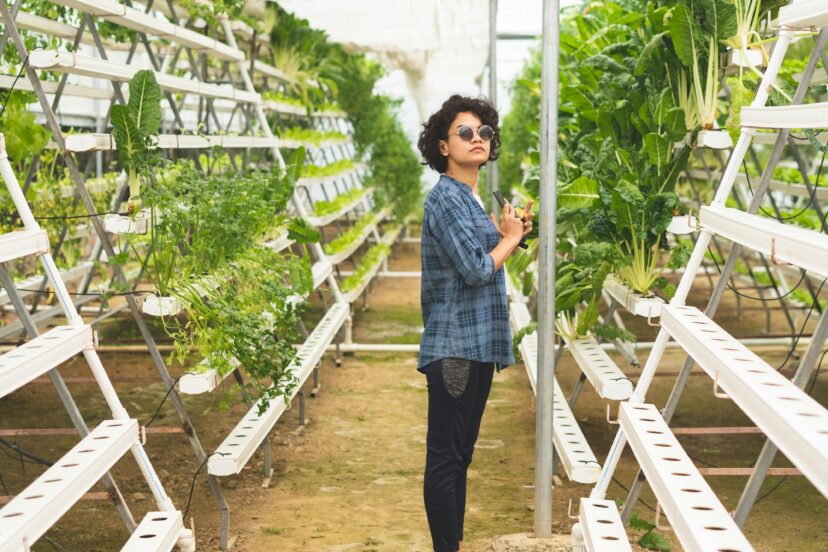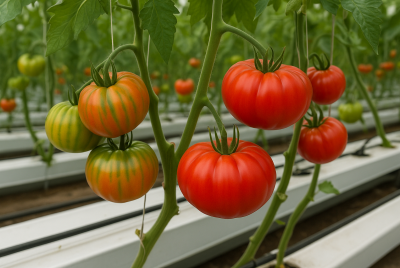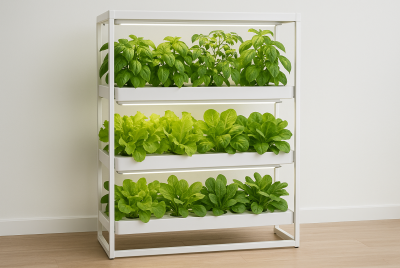Spring Hydroponic Gardening: Top 5 Tips For Summer Produce
We may earn a commission for purchases made using our links. Please see our disclosure for more details.
Spring is finally here and the weather is warming up! For gardeners and green thumb wannabe, it’s a good time to enjoy fresh products during this summer. Hydroponics offer a faster way to grow plants efficiently and sustainably. So, if you’re looking to up your game, we’ll give you five simple tips that’ll help you get the most of your spring. Ready to enjoy an abundant summer produce? Let’s get started!
1. Choose the Right Hydroponic System for Your Needs
First off, you need to understand that not all hydroponic systems work the same way. That’s why you have to choose which setup fits your lifestyle. Are you looking for simple, beginner-friendly setups or a larger, more complex one? This is your starting point so make sure to think about which one you’ll go for. To help you decide, here are the most common types:
- Deep Water Culture (DWC): Your plants’ roots are soaking up nutrient-rich water as they float on a floating raft. incredibly simple and excellent for leafy plants like lettuce and basil.
- Nutrient Film Technique (NFT): The roots are continuously covered in a thin coating of nutritional solution. For tomatoes and cucumbers, which require consistent feeding, this arrangement works nicely.
- Aeroponics: Roots hang in the air and get misted with nutrients. High-tech but incredibly efficient for strawberries and herbs.
- Wick System: The most basic approach: nutrients reach the plant roots by moving up a wick. Ideal for tiny plants, such as parsley or mint. Trust me, you’ll never go wrong with this one.
Consider the plants you like to grow and the length of time you can spare for upkeep. NFT or DWC are your finest options if you’re looking for crunchy cucumbers and juicy tomatoes.
2. Select the Right Plants for Your Spring Hydroponic Garden
Selecting the right plants is important because not all plants do well in a hydroponic system. Given that we’re discussing summer crops, these are the winners:
- Tomatoes: Although they love hydroponics, their vines require a lot of light and assistance. If space is limited, choose Roma or cherry varieties.
- Cucumbers: They require a trellis or other support to prevent them from taking over your setup, although they grow wildly in hydroponic systems.
- Peppers: Peppers are a fantastic option, whether they are hot or sweet. Spring is a great time to start because they enjoy warm weather.
- Lettuce: This is a popular hydroponic plant that grows quickly and requires little care, providing you with fresh greens all summer long. My favorite to grow!
- Herbs (Basil, Mint, Parsley): It is essential to have fresh herbs if you enjoy cooking. They are very simple to grow and flourish in hydroponics.
Save yourself from a lot of hassles and boost your chances of a good harvest by picking the right plants.3. Optimize Light for Healthy Summer Produce
Your plants will suffer if they don’t get enough light, which is the fuel that drives their growth. We need to make sure they receive enough light right away since we want a summer harvest.
- Natural Light: Growing outdoors? Awesome! Find a sunny spot that gets at least 6-8 hours of direct sunlight daily.
- Grow Lights: If you have plans to grow indoors, LED grow lights are your best friend. They’re energy-efficient and give your plants the full light spectrum they need. Place them about 12-18 inches above your plants for the best results.
- Watch for Stretching: If your plants look like they’re stretching toward the light, they probably aren’t getting enough. Adjust your lighting to keep them compact and healthy.
Think of light as your plant’s personal trainer—too little, and they’ll be weak and flimsy; too much, and they might get sunburned. Find that sweet spot!
4. Control Water and Nutrients for Maximum Growth
Since hydroponic gardening doesn’t use soil, your plants depend on you to deliver the right nutrients in the right amounts. Here’s how to keep them happy:
- Use Clean Water: If your tap water is high in chlorine or other chemicals, let it sit out for 24 hours or use filtered water to avoid buildup.
- Balance Your Nutrients: Different plants need different nutrient ratios. Tomatoes and peppers need lots of potassium and phosphorus, while leafy greens love nitrogen.
- Check the pH: The magic range is between 5.5 and 6.5. If it’s too high or too low, your plants won’t be able to absorb nutrients properly.
Think of it like feeding a pet—too much or too little of the wrong food, and they won’t thrive. Keep your water and nutrients in check, and your plants will reward you.
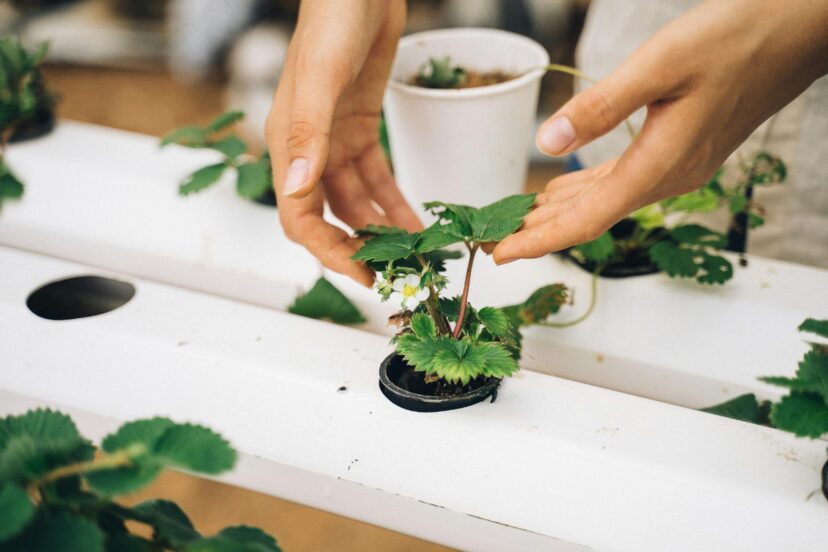
5. Maintain Optimal Temperature for Summer Produce
Spring temperatures can be all over the place, but your hydroponic plants like things stable. If it’s too cold, they’ll slow down. Too hot, and they might stop growing altogether.
- Ideal Temperature: Most summer produce plants thrive at 70°F-80°F during the day and 60°F-70°F at night.
- Avoid Heat Stress: If your plants are indoors, make sure they’re not too close to grow lights, and consider using a small fan to keep air moving.
- Watch Out for Cold Nights: If you’re growing outdoors, spring nights can still be chilly. A greenhouse or some insulation can keep things from getting too cold.
Keeping temperatures consistent will help your plants grow strong and steady, so you’ll have a lush summer garden in no time.
Optimizing Hydroponic Systems for Maximum Yield
Maintaining the right environmental conditions is crucial for a successful hydroponic garden. Research on nutrient solution temperature control shows that cooling the solution in summer and heating it in winter can significantly improve plant growth and yields. Additionally, a comprehensive review on hydroponic technologies highlights the best systems and methods for growing a variety of fruits and vegetables efficiently. By applying these insights, hydroponic gardeners can enhance their summer produce while ensuring optimal growth conditions year-round.
Top Products for Your Hydroponic Garden
- Deep Water Culture (DWC) Kit – A beginner-friendly hydroponic system that’s easy to set up and great for growing leafy greens and herbs.
- Full-Spectrum LED Grow Light – Ensures your plants get enough light indoors, mimicking natural sunlight for optimal growth.
- Hydroponic Nutrient Solution – Provides essential nutrients to keep your plants healthy and thriving without soil.
- pH Test Kit & Adjusters – Helps maintain the right pH level in your nutrient solution for better nutrient absorption.
- Trellis Netting – Supports climbing plants like tomatoes and cucumbers, preventing breakage and improving airflow.
- Clip-on Fan – Keeps air circulating around your plants, reducing the risk of mold and disease.
These products will give your hydroponic garden the best chance at a successful and productive summer harvest!
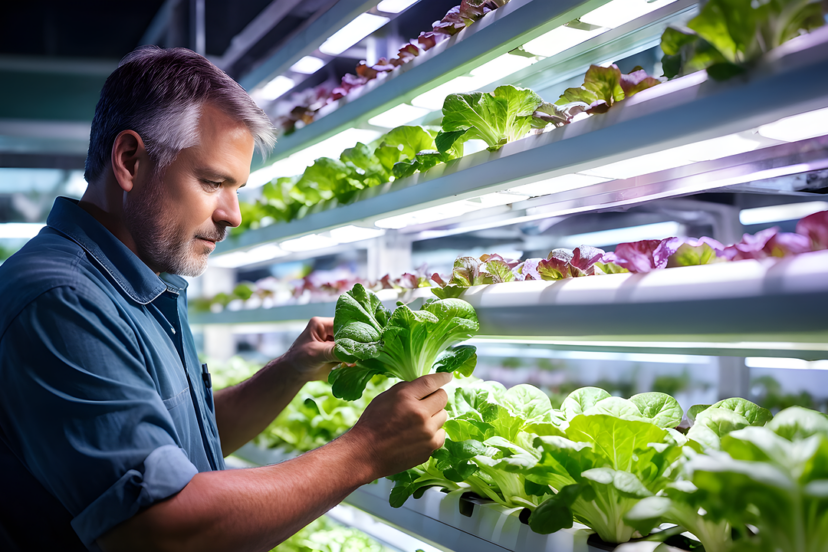
Conclusion
Starting a hydroponic garden in spring is the perfect way to guarantee a fantastic summer harvest. With the right system, the best plant choices, plenty of light, balanced nutrients, and stable temperatures, you’ll set yourself up for success. Hydroponics isn’t just about growing plants—it’s about growing them smarter. Whether you have a big setup or just a small space, these tips will help you make the most of your summer produce. So grab your seeds, set up your system, and get growing!
FAQs
1. What makes hydroponic gardening better for summer produce?
Hydroponics allows you to control the environment completely—no worrying about soil quality or unpredictable weather. Plus, plants grow faster and often produce higher yields.
2. Can I grow large plants like tomatoes in a hydroponic system?
Absolutely! Just make sure you provide proper support for their vines and enough nutrients to keep them happy.
3. When should I replace the hydroponics system’s water?
Every 2-3 weeks is a good rule of thumb, but always check your nutrient levels and pH to make sure everything stays balanced.
4. What’s the easiest hydroponic system for beginners?
Deep Water Culture (DWC) or a simple Wick System are great for beginners—low maintenance and easy to set up.
5. Do I need a greenhouse for hydroponic gardening?
Not necessarily! You can grow hydroponically indoors with LED grow lights, or outdoors if you have a warm, sunny spot.

